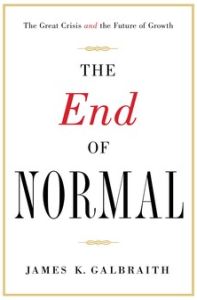Join getAbstract to access the summary!

Join getAbstract to access the summary!
James K. Galbraith
The End of Normal
The Great Crisis and the Future of Growth
Free Press, 2014
What's inside?
Did this last recession feel different? That’s because the economy may have changed for good.
Recommendation
James K. Galbraith, a left-leaning economist like his famous father, John, paints a broad picture of the economic situation in 2014 and its lasting changes. He explains why many experts continue to wait for “normal” to reappear, while explaining why it will not and offering pointers on coping with an unknown future. He provides a critical survey of current economic debates, an interpretation of the financial crisis, an overview of the 1970s, and a discussion of the job-destroying aspects of the Internet and the digital technology wave. Drawing on the themes of raw material and energy, Galbraith challenges the accepted historical narrative. He elbows competing arguments aside while criticizing right-wing politics and free-market academia. Though he presents few revelations, Galbraith provides a wise, commonsense distillation and backs up the serious assertion of his book’s title. While always politically neutral, getAbstract recommends Galbraith’s viewpoint – which may prove insightful over time – to students, policy makers, investors and anyone seeking greater understanding of the functioning of the US economy.
Summary
About the Author
University of Texas professor James K. Galbraith is a senior scholar with the Levy Economics Institute at Bard College. His books include The Predator State and Inequality and Instability.

















Comment on this summary